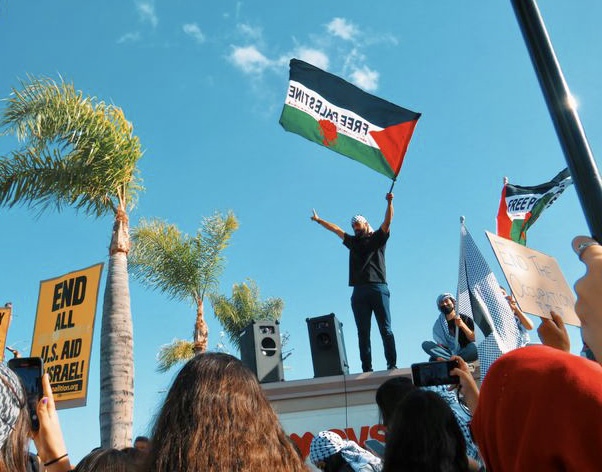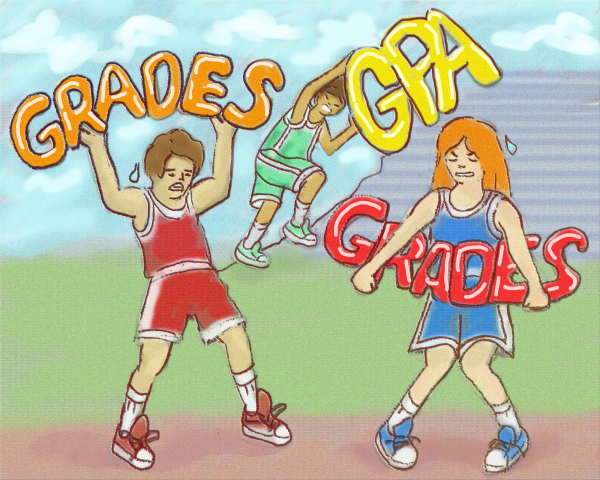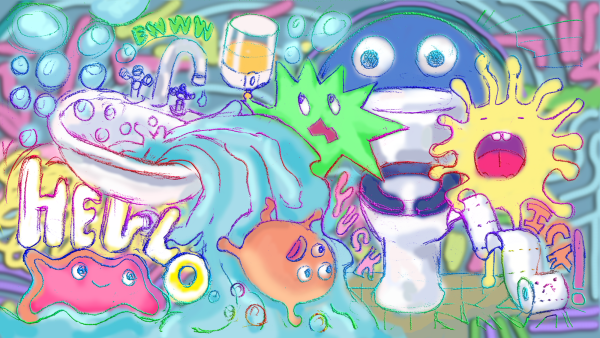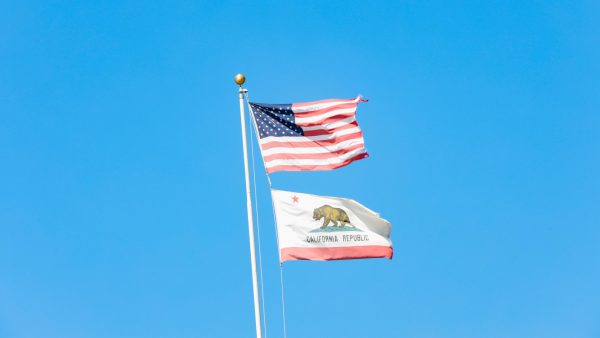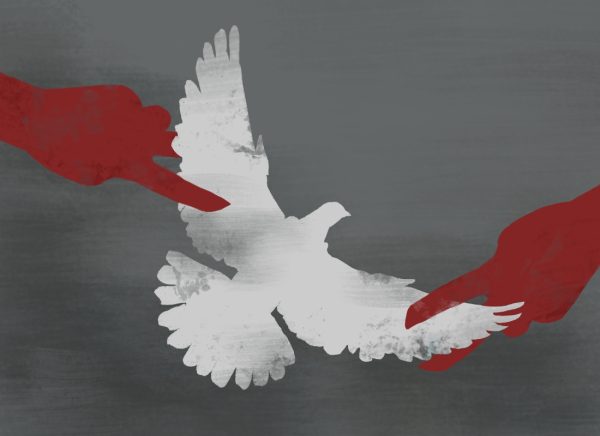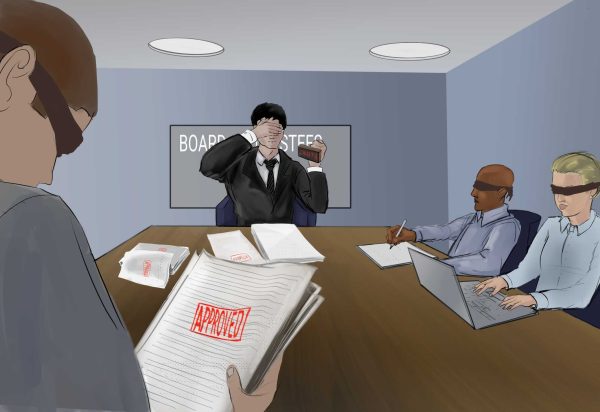Finding hope in tragedy
As speeches are given during protests in Anaheim in collaboration with CSULB and the Palestinian Youth Movement (PYM), protestors wave Palestinian flags on Friday, May 21. Safia Ahmed/The Union
I grew up dreaming of a free Palestine. A once beautiful and prosperous land embroidered with date palms and the finest olives has now turned into dust.
Palestine is a land where the ashes of the dead are scattered beneath your feet. As bombs fall and cities vanish, the screams of children disappear.
On Saturday, May 15, I marched across Wilshire Boulevard in front of the Federal Building in Los Angeles to condemn the unjust treatment and genocide being committed against Palestinians.
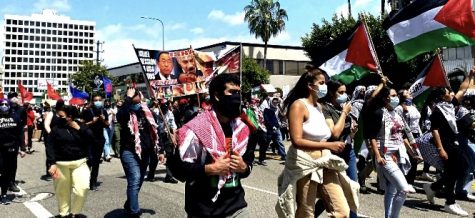
That day the Palestinian Youth Movement held a rally to protest against the mass execution and genocide against the Palestinians. This called for educated leaders to speak at the rally. The protest was held worldwide to mark the 73 years of the Nakba or the catastrophe that occurred in Palestine in 1948.
The Nakba refers to the ethnic cleansing and demolition of Palestine in 1948.
According to PCBS (Palestinian Central Bureau of Statistics), the Nakba resulted in the displacement of 800 thousand Palestinians out of the 1.4 million who resided in historical Palestine.
PCBS reported that by the end of 2020, the population density in the State of Palestine was 857 people per square kilometer (km2): 545 people/km2 in the West Bank and 5,693 people/km2 in the Gaza Strip, with refugees accounting for 66% of the entire population in the Gaza Strip.
While marching, I was reminded of the young children who were orphaned as a result of the Nakba.
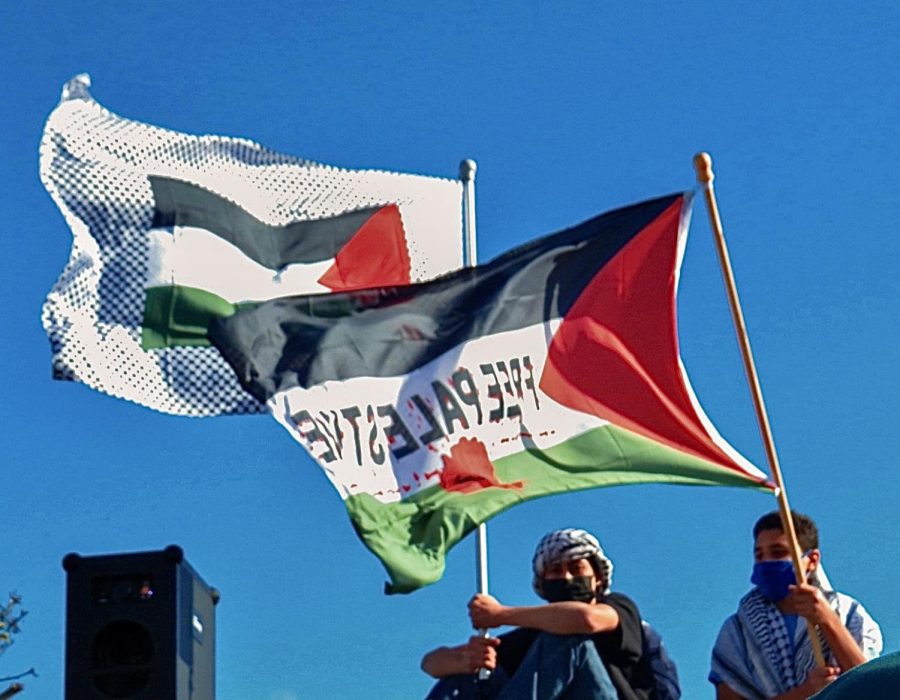
More than 10,000 individuals marched across Wilshire that day. Several bearing Palestinian heritage and others marching to fulfill their lifelong dream of independence in Palestine.
Several of my Palestinian friends shared their stories about being unable to visit their homeland or family members who live there.
One story that always haunts me was from a friend sharing how the once sweet and fragrant smell of fresh bread from her local bakery immediately vanished as it was covered by the smell of sulfur from bombs.
Hearing this story from my friend reminded me of how many Palestinians are compelled to live lives like hers. They were not allowed to embrace their own culture and traditions in Palestine because the Israeli occupation forces would consider their actions as a threat.
During Ramadan this year, I recall hearing about the shooting in Al-Aqsa, a mosque in Jerusalem (Al-Quds), a holy site to Muslims, Jews and Christians.
Al-Aqsa is the defining feature of Palestine that continues to unite the Muslim community. Early in the morning, flocks of white doves flutter around Al Aqsa, entranced by the breeze.
As Muslims prepared to pray in Al Aqsa on the holy night of the month, Israeli police opened fire, firing rubber-coated bullets and grenades into the mosque as people prayed.
Muslims consider the last 10 nights of Ramadan to be auspicious and I spent the last ten nights praying for Palestine, the inhabitants of Gaza and the villages under attack.
Following the Al-Aqsa shooting, the number of protests increased, as did the number of protestors who participated and I planned to attend as many protests as I could.
The Palestinian Youth Movement organized various protests across Los Angeles early this year, but the protests have gradually decreased in size. I miss chanting the rallying cry during protests. The power that protestors possessed as they marched and demanded an end to the occupation of Palestine was indescribable.
Palestine is facing a cataclysmic disaster, and the nation remains oblivious to it. I share these stories in the hopes that others can become educated on the injustice that’s happening in Palestine. The more people that know and understand the struggles that Palestinians face, the more powerful that the message can be disseminated in demanding Palestine’s freedom and independence.
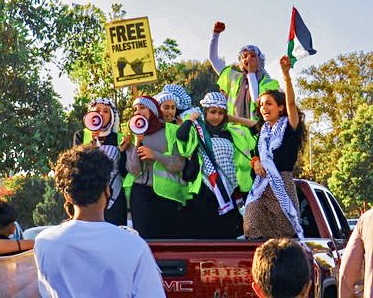
Safia Ahmed/The Union



